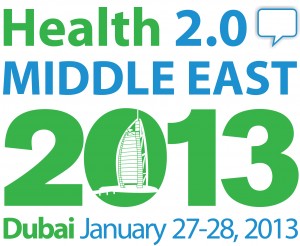Health 2.0 Middle East — Personal/Public Health: Location, Location, Location
 The Health 2.0 Middle East - Dubai Conference will feature an exciting keynote by Bill Davenhall on geomedicine. Mr. Davenhall served as the Global Health and Human Services Solutions Manager at ESRI the largest geographic information system (GIS) software developer in the world. The conference will be held 27th-28th January, 2013 at the majestic Jumeirah Beach Hotel.
The Health 2.0 Middle East - Dubai Conference will feature an exciting keynote by Bill Davenhall on geomedicine. Mr. Davenhall served as the Global Health and Human Services Solutions Manager at ESRI the largest geographic information system (GIS) software developer in the world. The conference will be held 27th-28th January, 2013 at the majestic Jumeirah Beach Hotel.
Register Now.
Mr. Davenhall will describe his work in the field of geomedicine – the intersection of public health knowledge with personal medicine through the use of geography. Global health begins at home. The obligation of nations to help citizens have a safe, healthy passage through life is neither a small nor simple matter — not one taken lightly by the health authorities of the UAE. All of which are supporting and attending the Health 2.0 Middle East conference.
What Is Geomedicine?
At the present time, very little health-relevant geographic information is available to a clinician at the time of a medical diagnostic encounter, and it is certainly not a typical part of a comprehensive medical record. Geomedicine uses modern information technology to deliver information on a patient’s potential environmental exposures into the hands of the clinician while they are in the examination room.
Mr. Davenhall will describe the uses of geographic information in disease surveillance and the growing use of GIS in today’s public and population health. GIS provides a powerful set of tools for understanding health risks to populations and for planning and evaluating interventions to improve population health.
Think of geomedicine as your personal health surveillance system, says Mr. Davenhall always turned on and always vigilant about sensing changes in your environments (communities, neighborhoods, households and worksites, both past and present) that might impact your health. Geomedicine has the capacity to become that platform — a new medical informatics specialty devoted to bringing all the data together intelligently to actually do something to help you and your doctor keep you healthy. Only though informed informational partnerships with our personal physicians and our public health professionals will we be better served by what is revealed through the modern geographic microscope!
Those who are building electronic health records (EHR)— supposedly for the benefit of patients and health-seeking consumers—must make sure we have a reliable way to link our personal place history to the sophisticated electronic health records they are building now, says Mr. Davenhall. The Health 2.0 conference will also feature a session exploring EHR applications and their most commonly used functions for supporting clinicians’ needs across the continuum of care.


 Idea for a guest post? Get in
Idea for a guest post? Get in